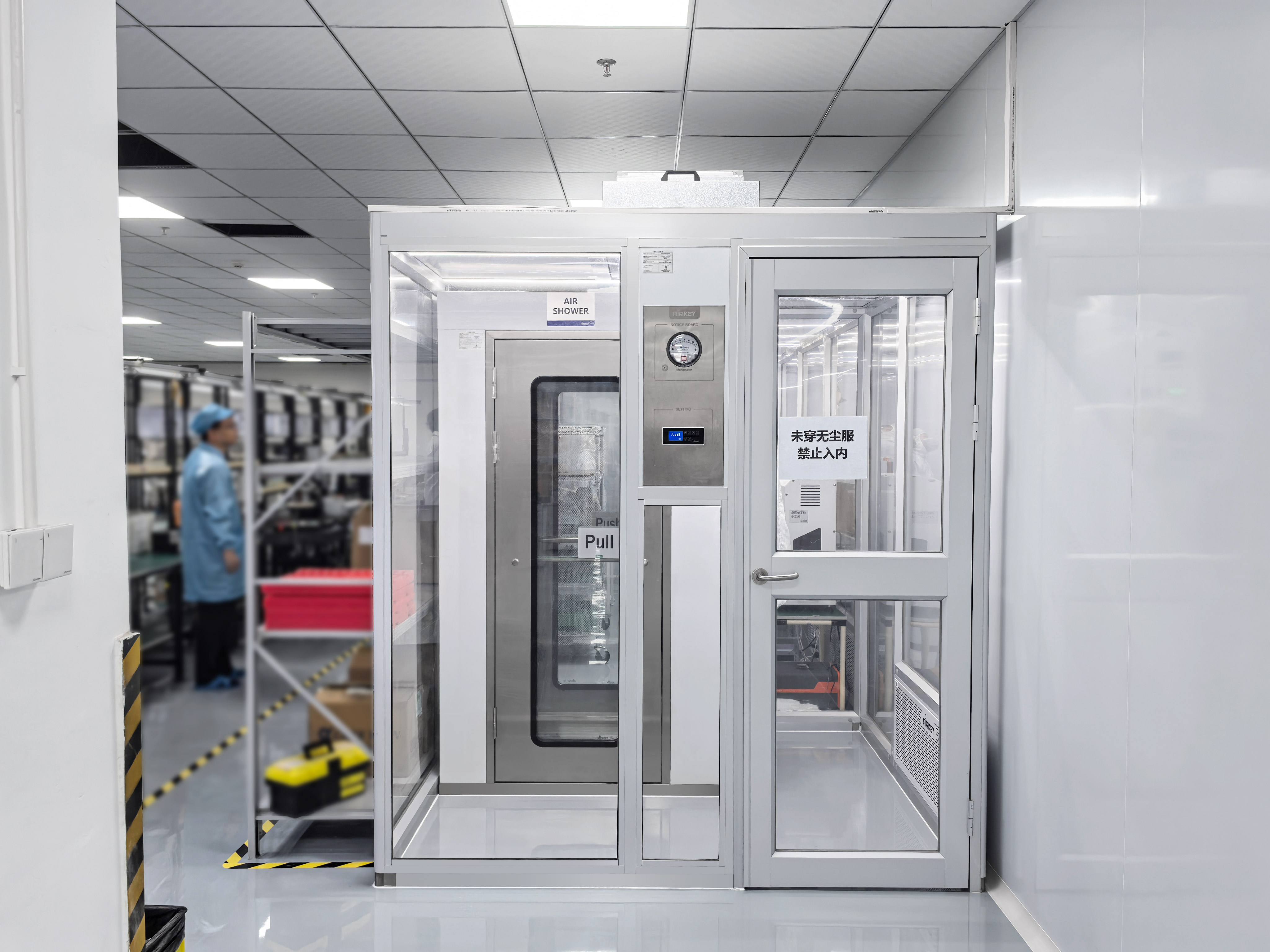Shenzhen, the heart of China’s innovation engine, is once again at the forefront of technology with the recent completion of a state-of-the-art ISO 5 cleanroom. It is the critical core of an advanced drone testing laboratory, designed for a future where agility is as important as purity.
The challenge presented by the client was a familiar one in a dynamic city like Shenzhen: they needed a high-precision environment capable of testing the most sensitive aerial drones, but with a major constraint — their facility lease was due for renewal in just one year. A traditional, built-in-place cleanroom was out of the question. The solution? An advanced, relocatable modular cleanroom that perfectly balanced uncompromising performance with future-proof flexibility.

The uncompromising standard: ISO 5 with precision control
The primary function of this facility is to provide a contaminant-free environment for testing and calibrating drones, particularly those with sensitive optical systems, micro-electromechanical systems (MEMS), and components intolerant to particulate matter.
To achieve this, the cleanroom meets the stringent ISO 5 (Class 100) classification. This means maintaining no more than 3,520 particles of 0.5 microns or larger per cubic metre of air. This is achieved through a robust system of:
- High-efficiency particulate air (HEPA) filtration: creating a laminar airflow to sweep particles away from critical testing zones.
- Precise temperature and humidity control: essential for ensuring consistent performance of drone electronics, battery testing, and preventing static discharge or material deformation.
This controlled environment allows engineers to validate drone performance with data that is reliable and repeatable, unaffected by the variable external conditions of a typical industrial setting.

The invisible enemies: Why drones need purity
The core reason is simple: today’s high-end drones are not just flying machines; they are sophisticated data collection platforms packed with sensitive technology. Their performance can be compromised by contaminants invisible to the naked eye.
- Optical and sensor systems: drones used for high-precision mapping, industrial inspection, or scientific research rely on advanced sensors such as LiDAR, hyperspectral cameras, and high-resolution photogrammetry systems. A single microscopic dust particle on a sensor lens or a mirror within the system can scatter light, create flares, or distort data, leading to costly inaccuracies and flawed results.
- Micro-electromechanical systems (MEMS): at the heart of a drone’s stability are its inertial measurement units (IMUs) and gyroscopes. These often contain microscopic components that are incredibly sensitive to particulate contamination. A particle lodged in a MEMS accelerometer can cause drift or failure, leading to unstable flight and potential crashes.
- Long-term reliability: particulate matter inside a drone’s electronic speed controllers (ESCs), motors, or other moving parts can act as an abrasive, accelerating wear and tear and leading to premature failure. For enterprise-grade drones where reliability is paramount, ensuring a clean internal assembly is critical for longevity.

